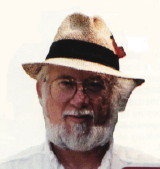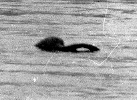
 In 1960, twenty-year-old Dan Rattiner started a small paper during his summer vacation in the Hamptons. He gave copies of it away for free, making money from the advertisements. It was the first free paper in the United States. Gradually Dan started more papers, each of them serving a different community in the Hamptons. He called all of them collectively Dan's Papers, and they soon became the most widely read papers in the Hamptons. Dan wrote most of the content himself, but from the start he approached the task with a sense of humor. Many of the stories were humorous hoaxes, which earned him the nickname the "Hoaxer of the Hamptons."
More…
In 1960, twenty-year-old Dan Rattiner started a small paper during his summer vacation in the Hamptons. He gave copies of it away for free, making money from the advertisements. It was the first free paper in the United States. Gradually Dan started more papers, each of them serving a different community in the Hamptons. He called all of them collectively Dan's Papers, and they soon became the most widely read papers in the Hamptons. Dan wrote most of the content himself, but from the start he approached the task with a sense of humor. Many of the stories were humorous hoaxes, which earned him the nickname the "Hoaxer of the Hamptons."
More…
 Frank Searle, a former army captain, arrived in Loch Ness to search for the monster during the early 1970s and soon established a reputation as a definite character. He was like a colonial-style adventurer, assisted by a succession of attractive young "monster huntresses." He took an enormous number of photos of Nessie, many of which were published by the media, but all of which have been dismissed by experts as fakes. His early photos, such as the one to the right (taken in October 1972) have been identified as pictures of floating tree trunks. In later photos he progressed to cutting-and-pasting dinosaurs from postcards into his images. Searle left the loch in 1985 and died in 2005.
More…
Frank Searle, a former army captain, arrived in Loch Ness to search for the monster during the early 1970s and soon established a reputation as a definite character. He was like a colonial-style adventurer, assisted by a succession of attractive young "monster huntresses." He took an enormous number of photos of Nessie, many of which were published by the media, but all of which have been dismissed by experts as fakes. His early photos, such as the one to the right (taken in October 1972) have been identified as pictures of floating tree trunks. In later photos he progressed to cutting-and-pasting dinosaurs from postcards into his images. Searle left the loch in 1985 and died in 2005.
More…
 August 7, 1972: An expedition to find Nessie led by Dr. Robert Rines of the Academy of Applied Science struck gold when its underwater camera took a picture of what appeared to be the flipper of a large aquatic animal resembling a plesiosaur. However, the relatively clear image of a flipper shown to the public was not quite what the camera had initially recorded. The initial image was far less distinct. (It basically looked like a shot of a bunch of bubbles or sediment in the water.) This initial picture was then computer enhanced by the NASA Jet Propulsion Laboratories in Pasadena, and apparently the computer-enhanced image was further artistically enhanced by the Academy of Applied Science team (i.e. it was retouched), thereby producing the final flipper photo. Modern image-enhancement software has not been able to conjure anything resembling a flipper from the original image.
More…
August 7, 1972: An expedition to find Nessie led by Dr. Robert Rines of the Academy of Applied Science struck gold when its underwater camera took a picture of what appeared to be the flipper of a large aquatic animal resembling a plesiosaur. However, the relatively clear image of a flipper shown to the public was not quite what the camera had initially recorded. The initial image was far less distinct. (It basically looked like a shot of a bunch of bubbles or sediment in the water.) This initial picture was then computer enhanced by the NASA Jet Propulsion Laboratories in Pasadena, and apparently the computer-enhanced image was further artistically enhanced by the Academy of Applied Science team (i.e. it was retouched), thereby producing the final flipper photo. Modern image-enhancement software has not been able to conjure anything resembling a flipper from the original image.
More…